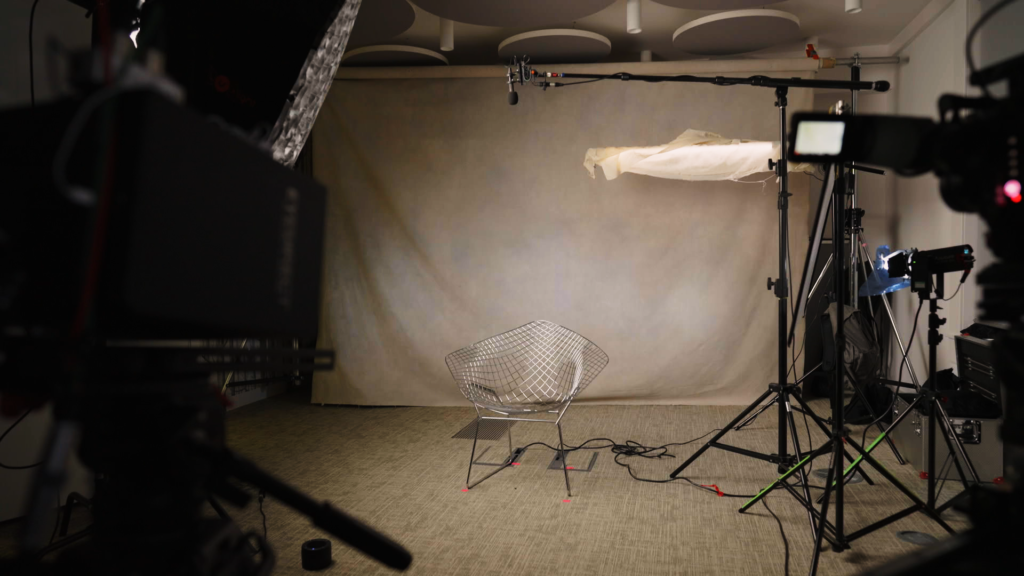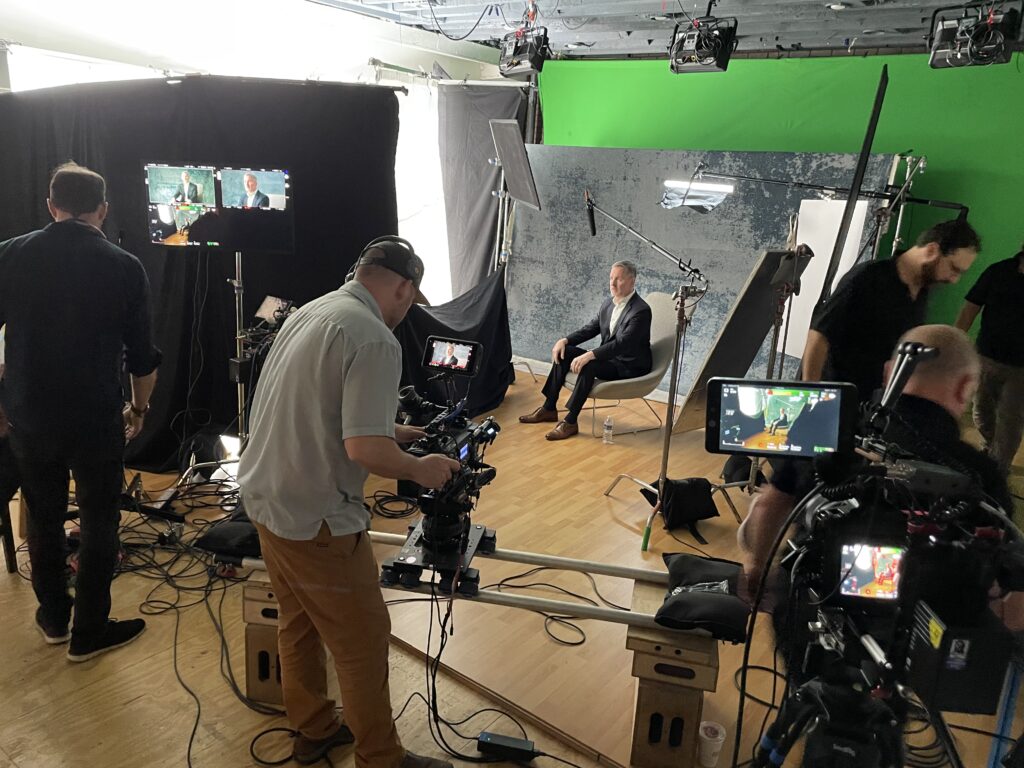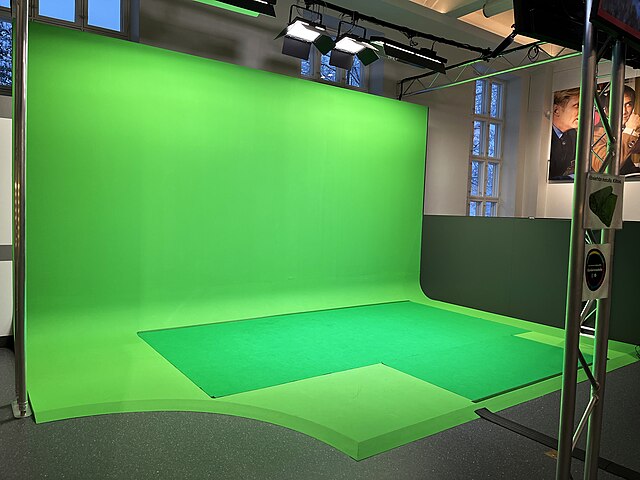Lights, Camera, Action: A CEO’s Guide to Video Production Terms

In the dynamic world of business communication, CEOs are finding themselves in front of the camera more often. Executives don’t have to be video production experts—but understanding the terminology will help you create the best video possible.
No matter the type of video your company is looking to create, you’re likely to come across many of these terms and tools.
Cinematography: Crafting Visual Excellence
Good cinematography is so much more than simply putting a subject in front of a background. Composition, camera movements, and lighting are all creative choices that can either help or hurt the message that you are trying to deliver.
Consider the framing of a shot: A full body shot can establish the environment and its relation to the subject. Maybe they’re walking into the front doors of the office, through a beautiful college campus, or shaking hands with a client in a meeting space. Moving in, a medium shot captures the head and torso. This is a good choice for introducing someone and telling a story. And moving even closer in, a close-up shot, which includes the shoulders and up, is very intimate and is a strong choice for conveying emotion.
Camera movement is an important consideration in cinematography as well. A static camera feels official, while a moving camera simulates the viewer being part of the action.
Cinematography also includes lighting choices. The tone of lighting can feel warm and inviting, authentic and real, or cool and elegant. Additionally, the way someone’s face is lit can make them feel friendly, professional, powerful, or sinister.
All of these visual elements come together to tell your story – even before the first words have been spoken.

Microphones: Capturing Clear Audio
Crystal-clear audio is non-negotiable in video production. Interestingly, people are far more likely to stop watching a video with bad audio than a video with bad camera work. This has to do with the psychology of sound. So making sure you record clean audio without distraction will make or break your video, no matter how beautifully it has been shot.
CEOs should acquaint themselves with the types of microphones used on set so they know what to expect when sitting down to record. Most often, interviews are done using a lavalier microphone. These are tiny microphones that attach discreetly to your clothing. They capture close-up audio and are generally placed around mid-chest to capture your speaking. Placing this mic can require close contact with an audio professional, but there are alternatives for interviewees who may not be comfortable with this recording approach.
Your set may also include a boom microphone, which is a longer microphone attached to a pole or stand. These microphones are used to capture a wider amount of audio. Depending on the purpose of your video, you might want to capture the background sounds of the workplace, the crowd of an event, or the natural sound of your environment. This type of sound can make your video feel more real.
Boom microphones may also be used when a subject is moving or there are multiple subjects together.
B-Roll: Enhancing Narrative Depth
B-roll is the supplementary footage overlaying the primary footage (such as interviews). It plays a pivotal role in enhancing the narrative depth of your video.
Executives should be aware of the importance of capturing compelling b-roll. This can seem like a secondary priority when arranging the elements of your video shoot. But b-roll is essential to telling a full story and having enough material to paint the whole picture. You’ll want to put time aside to gather this footage.
B-roll provides context and engagement. The b-roll you collect will be dependent on the subject matter of your film.
B-roll adds context to your messaging, It also keeps a viewer’s visual interest. Perhaps most importantly for an interviewee, b-roll can cover audio edits so that the interviewee sounds seamless and concise. When capturing b-roll, you’ll often want variety, from locations, to angles, to framing.
Teleprompter: Facilitating Smooth Delivery
On-camera spoken delivery should be confident and strong. Executives should be acquainted with teleprompters, which are devices that display scripted content. They aid the speaker in maintaining eye contact with the camera and nailing the script. Nowadays, an iPad or iPhone can serve as a teleprompter device.
However, teleprompters are not for everybody.
In order to make a teleprompter video sound natural, the subject will likely need rehearsal or even coaching, as reading from a teleprompter requires a different skill set than simply reading aloud. If you are planning to use a teleprompter, here are some quick tips on maximizing your use:
Green Screen and LED Walls: Unlocking Virtual Possibilities
For executives aiming to convey a message against a different backdrop or add graphic elements to their video, understanding the green screen is paramount. A green screen is a vibrant green background placed behind the speaker. In post-production, the green is removed and replaced, unlocking a world of creative possibilities. This can visually transport your subject anywhere without the need to actually send out your speaker, crew, and equipment.
To ensure that the green screen footage appears authentic, some more advanced production techniques may need to be involved. With a low-quality camera and lighting set up, the image can appear choppy, like a Zoom background. Or there may be a green ring around the subject, destroying the illusion. So leaders need to understand that using a green screen can be complex if they hope to use this tool in their corporate videos.
An alternative to the green screen is an LED wall. These virtual sets are commonly used in film, television, and commercials, but are slowly gaining traction in the corporate video world. Like a green screen, these tools require advanced production techniques to ensure that the subject appears to be “in” the location that appears on LED wall, but the results can be incredibly realistic.
